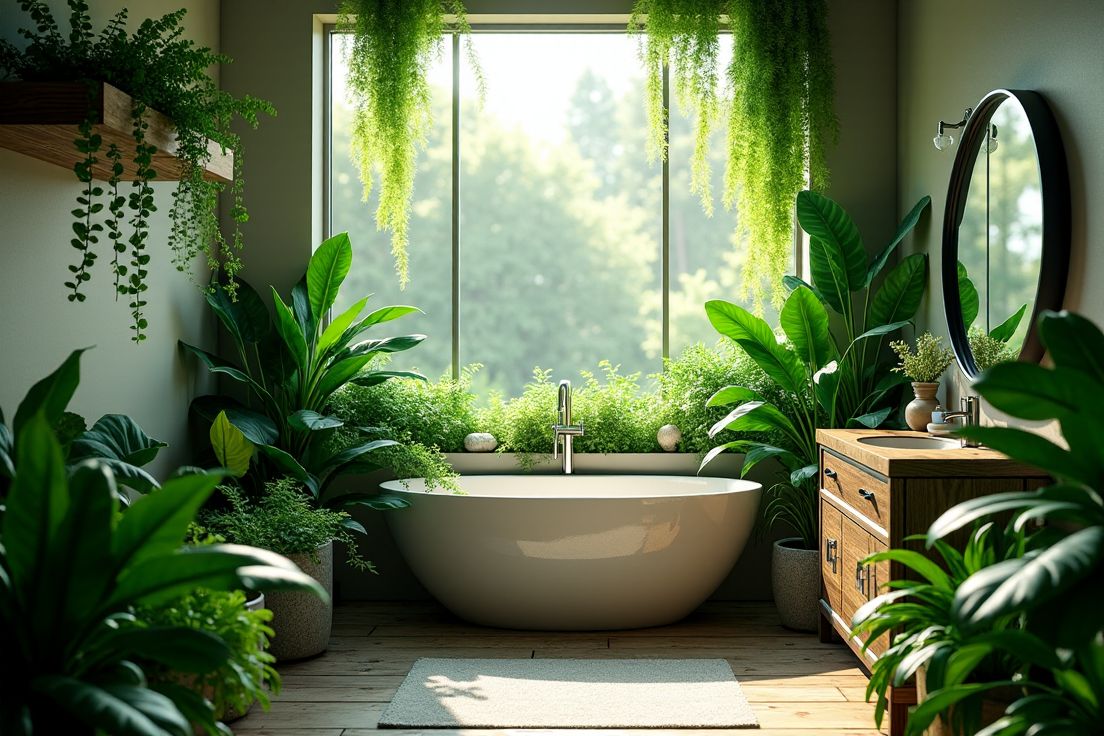Indoor gardening can be a fun and rewarding hobby, especially when it comes to choosing plants that thrive in humid environments. If you have a bathroom or kitchen that tends to stay moist, you’re in luck! Many beautiful houseplants absolutely love high humidity and can turn those spaces into green havens.
In this post, we’ll explore some of the best plants for humid areas. From colorful orchids to resilient ferns, there are plenty of options to consider. Whether you’re a beginner or a seasoned plant lover, you’ll find the perfect greenery to add life and freshness to your indoor spaces. Let’s dive in and discover the plants that will thrive in your home!
Thriving Indoor Plants for Moist Conditions

One popular choice for humid spaces is the Peace Lily. Known for its beautiful white blooms and glossy leaves, it thrives in moisture-rich areas. This plant can tolerate low light, making it perfect for spots that dont receive much sunlight.
Bamboo Palm is another excellent option.
It not only copes well with humidity but also adds a tropical vibe to your home. This palm can help purify the air, which is a bonus for indoor spaces.
The Boston Fern is a classic for bathrooms and kitchens. Its lush fronds love humidity and need regular watering.
Its essential to keep the soil moist, as this fern prefers damp conditions.
Orchids are stunning plants that can flourish in high-humidity environments. They require a bit of care, including indirect sunlight and a special potting mix. Mist them occasionally to keep the humidity high, which helps them thrive.
Spider Plants are forgiving and easy to care for. They enjoy humidity and can tolerate various light conditions. Plus, theyre great at filtering out indoor air pollutants.
Lastly, consider the Philodendron.
Ideal Choices for Humid Spaces
Another great choice is the Dracaena. This plant not only adds a touch of elegance but also thrives in humid conditions. It prefers bright, indirect light and requires minimal care. Regular watering is essential, but be cautious not to let the roots sit in water.
The Calathea stands out with its stunning leaf patterns. It enjoys humidity and indirect sunlight, making it perfect for bathrooms or kitchens. Keep the soil consistently moist, and you’ll be rewarded with vibrant foliage.
Chinese Evergreen is known for its colorful leaves and adaptability.
Here is a comparison of two popular houseplants, Calathea and Chinese Evergreen, highlighting their key characteristics and care requirements.
| Plant Name | Leaf Patterns/Color | Light Requirements | Humidity Preference | Watering Needs | Ideal Locations |
|---|---|---|---|---|---|
| Calathea | Stunning patterns | Indirect sunlight | High humidity | Keep soil consistently moist | Bathrooms, kitchens |
| Chinese Evergreen | Colorful leaves | Low to bright indirect light | Moderate humidity | Water when the top inch of soil is dry | Living rooms, offices |
It can handle a range of humidity levels and doesn’t mind lower light. This plant is also relatively forgiving when it comes to care, making it ideal for beginners.
Fittonia, or the nerve plant, is an excellent choice for those who appreciate a pop of color. It loves humid environments and can be placed in terrariums or small pots.
Fittonia, also known as the nerve plant, offers vibrant colors and easy care, making it a popular choice for plant enthusiasts of all levels. Here are some key points about this lovely houseplant:
- Thrives in high humidity and can add a tropical feel to any space.
- Available in various color combinations, including pink, white, and green, enhancing its decorative appeal.
- Prefers indirect light, making it suitable for indoor environments without direct sunlight.
- Requires minimal care